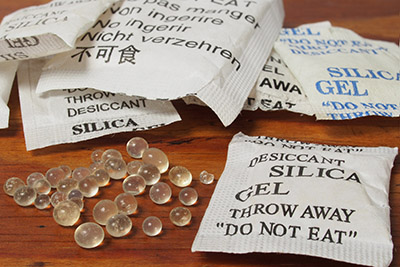
Macro of silica gel bags on a table
Desiccant gel packs are used to absorb moisture/water (desiccating the surrounding material). The typical function is to protect electronic products, clothes and shoes from the effect of moisture/humidity. Oxygen absorbers are used to absorb oxygen. The typical function is to increase shelf life of food or pharmaceutical products. Inside these gel packs is a sorbent, a material used to absorb liquids or gases. The sorbent is typically shaped as pellets or grains, 1-5 mm in diameter. As an example, sorbents can be found in granular shape in baby diapers.
Vacuum conveying is perfectly suited to manage the challenges of conveying these small, fragile materials. The contained conveying in an enclosed system minimizes dust generation, and consequently minimizes the exposure to the hazardous dust for workers. The need for a small footprint, low building height, and flexibility of routing the pipeline is a perfect match for Piab vacuum conveying solutions.
By automating the currently prevailing manual filling of hoppers, Piab provides a great opportunity for labor cost savings. Its ability to provide transition pieces, both standard and locally customized, gives the company a benefit of providing ready to fit conveying equipment, which provides additional value to its users.
Capacity requirements when feeding the VFFS machines are typically in the several hundred lb/hour range, which means that the smaller conveyors are the most suitable for these applications. For the lowest building height, the piFLOW p64 is recommended. If the building height is less of an issue, the smaller piFLOW industrial range of vacuum conveyors can be used.
Piab
piab.com
Filed Under: Pneumatic Tips